Large-leaved ficus: features and care

It is almost impossible to create a cozy and beautiful living space without fresh flowers. Indoor plants are the soul of every apartment. The living area in a standard room not only decorates the space, but also purifies and humidifies the air, improves the atmosphere in the family and gives a huge amount of positive emotions.
In specialized stores, you can see a wide range of flower products, which are represented by various varieties and types of plants. For many decades, broadleaf ficuses have been in high demand. An unusual appearance, high aesthetic performance and unpretentiousness make it possible to grow this plant not only at home, but also in various institutions.
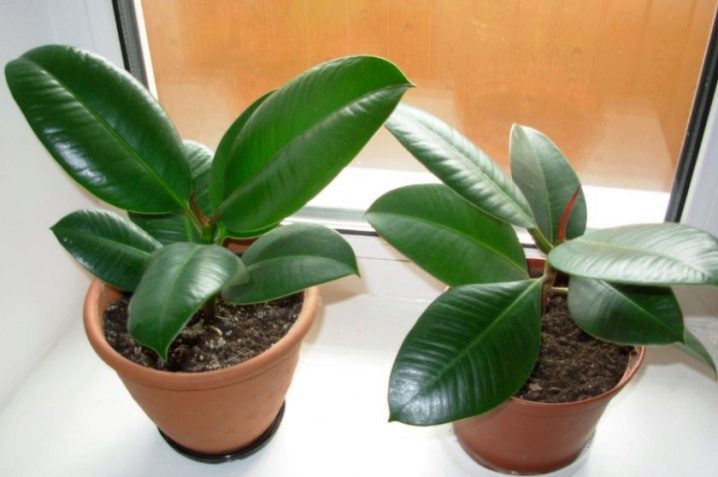
Peculiarities
Ficus with large leaves is an ancient species of evergreen plant of the mulberry family, which are grown not only in artificial conditions, but also in Australian, New Zealand, Portuguese, California forests and parks.
Biologists identify the following most popular names for broadleaf ficus:
- Rubbery;

- Tineke;
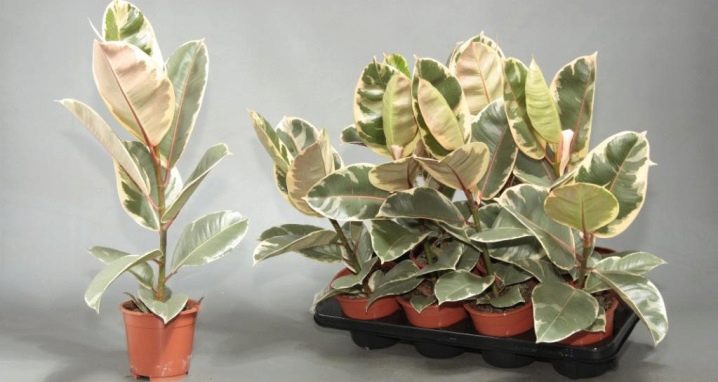
- Bengal;

- Belize;

- Robusta;

- Melanie;
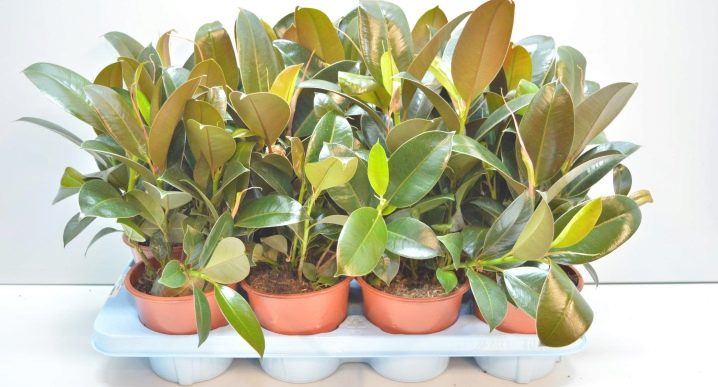
- Large-leaved.
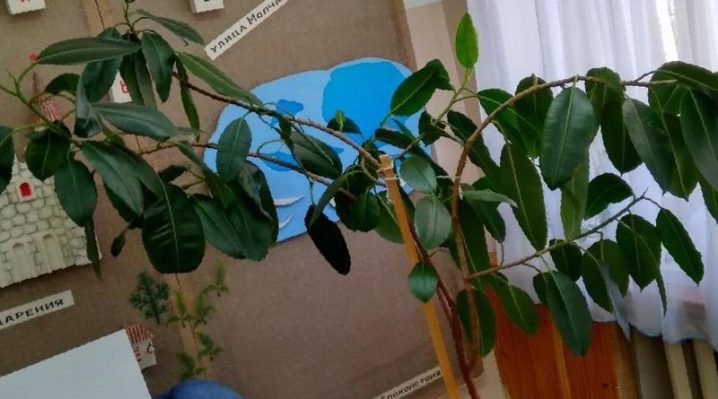
In a young plant, the trunk color is deep green, and in the old one it is dark brown. Ficus with large leaves not only decorates the room, but also absorbs formaldehyde, ammonia, benzene and other substances hazardous to health.
Before purchasing this flower, florists recommend studying the following series of contraindications:
- the period of gestation and breastfeeding;
- age under 18;
- bronchial asthma;
- individual intolerance;
- diseases of the gastrointestinal tract.
Specialists recommend paying special attention to the milky sap of the plant, a small drop of which can cause itching and redness. Contact of an animal or poultry with ficus can result in food poisoning.
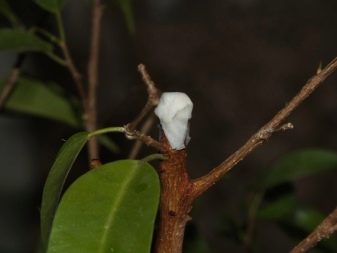

For patients suffering from bronchial asthma, the most dangerous species is rubber ficuswhich releases hazardous rubber particles into the air. Traditional healers use the plant to treat hemorrhoids, dysentery, mastopathy, fibroids, hematomas and toothache, as well as benign and malignant tumors.



Home care
Ficus care will not cause difficulties even for novice florists. One of the main conditions for the full growth and development of a plant is the presence of a high level of illumination. The most suitable places for a flower are window sills, the windows of which face south and east. To strengthen the immunity of ficus, it is necessary to take out the pots to a balcony or terrace in the summer, which are protected from direct sunlight. It is strictly forbidden to grow the plant in dark rooms with low temperatures.
The most favorable temperature regime for a plant is in the range from +20 to +25 degrees in summer and +15 degrees in winter. The soil mixture should be slightly acidic or neutral, and also have a loose structure and high nutrient content.
For planting a plant, experts recommend purchasing a special soil that matches the type of plant, or mixing one part of coarse sand with two parts of deciduous and turfy soil. Peat can also be added to this mixture.

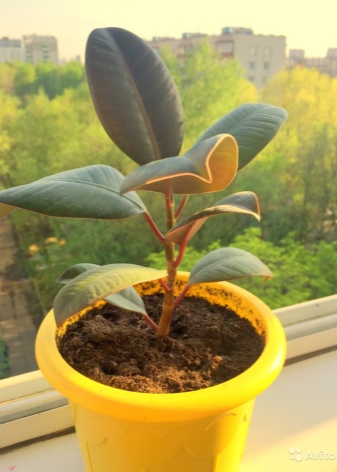
The flower pot for the plant should be selected according to the size of the flower.The presence of drainage holes is a prerequisite for preventing decay of the root system and preventing stagnant water. The surface of the pot must have a porous structure without a glazed layer. Before planting the ficus, it is necessary to pour a few centimeters of drainage material on the bottom of the pot.... When compacting the potting mix, care must be taken to keep the root collar slightly above ground level. Young plants with thin stems and large leaves need additional support.
Abundant watering at the end of the transplant is a prerequisite for quick adaptation of the plant to new conditions. The main sign for starting a transplant is the complete filling of the pot with plant roots, which are already curling up from lack of space. Ficus juveniles need to change the land annually, and for adult plants it is enough to change the soil once every few years.
In the absence of an opportunity to transplant old and tall plants, experts recommend simply replacing the top layer of the earth.
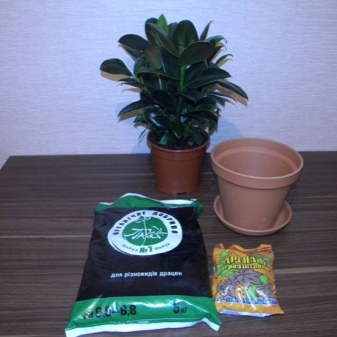

The plant transplant process consists of the following stages:
- abundant watering of the soil;
- removal of the top layer of soil;
- careful removal of plants along with a clod of earth;
- placing a flower in a new pot, at the bottom of which drainage material is poured;
- uniform filling of voids with fresh soil;
- watering the plant.
After purchasing a plant, it is not recommended to immediately transplant it. Only after a month of acclimatization can this manipulation be carried out.

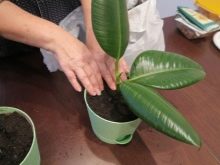
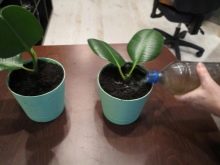
Moistening the soil should be carried out depending on the season and room temperature, but at least once a week. For irrigation, it is necessary to use only settled water at room temperature, and excess liquid must be immediately poured out of the pan. To create favorable conditions for the growth and development of the plant, a high level of humidity should be provided in the room. Conducting daily spraying and wiping the leaves will help in solving this problem.
To provide the plant with all the necessary nutrients, it is necessary to properly care for, feed with mineral and organic complexes 2 times a month. In specialized stores, you can buy ready-made fertilizers for ficuses with a high nitrogen content.
Experienced gardeners recommend studying the signs of improper care, which can lead to the following consequences:
- falling foliage - low level of illumination, the presence of drafts and frequent change of location, high soil moisture and the presence of temperature fluctuations;
- dry edges - low humidity in the room;
- yellowing of leaves - the introduction of a large amount of fertilizers, the presence of salt deposits, a large diameter of the flowerpot, the formation of putrefactive processes in the root system;
- slow growth - lack of nutrients, low light and small volume of the pot.

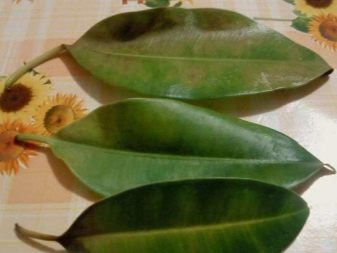
When the first signs of a plant disease are detected, you need to change the nutrient mixture and remove all damaged areas.
In the later stages of the disease, experts recommend cutting off healthy processes for their subsequent rooting, and discarding the diseased plant.
Often novice gardeners make the following mistakes:
- waterlogging of the soil;
- high humidity in the room;
- the presence of a low temperature regime.
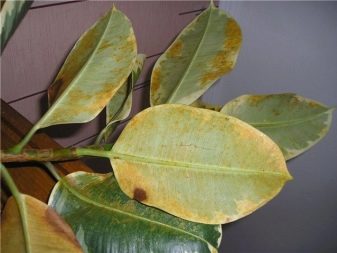
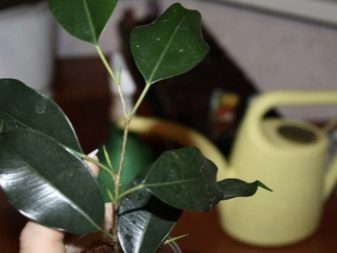
The development of dangerous diseases and the appearance of pests can complicate the process of caring for a plant. Among the most dangerous pests of this plant, experts distinguish the mealybug, spider mite and scabbard. To prevent the appearance of these insects, it is worth regularly washing the leaves, and in case of the appearance of pests, remove them with a cotton swab dipped in alcohol.
The following types of diseases can lead to the death of a plant:
- leaf fungus;
- gray rot;
- sooty mushroom;
- root rot.


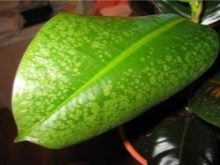
How to propagate?
Plants are mainly propagated in two ways.
- Rooting cuttings... To propagate the plant in this way, it is necessary to cut off the apical cuttings of at least 10 cm in spring or early summer. Before placing the shoots in water or in wet soil, it is worth rinsing the cut and carefully twisting the casting with a tube to reduce the level of moisture evaporation. The soil for the appendages should consist of an equal amount of perlite, sand and peat. The process of root formation can be accelerated by creating a greenhouse effect using ordinary plastic wrap.
The most comfortable temperature range is from +20 to +25 degrees. Mandatory manipulations are regular ventilation and humidification. After 30 days, you can repot the plant in a regular flower pot.
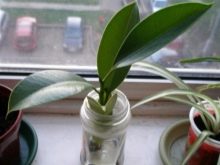
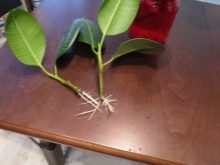
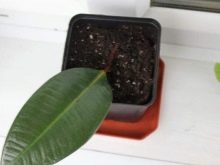
- Air outlets... For the propagation of ficus with air vents, it is necessary in winter to make a small incision on the stiff trunk and close it with a piece of moss and polyethylene. After a month, roots appear, which must be rooted in a new pot together with the top of the shoot. To accelerate the formation of the root system and the formation of a large number of roots, it is necessary to use root growth stimulants and growth regulators.
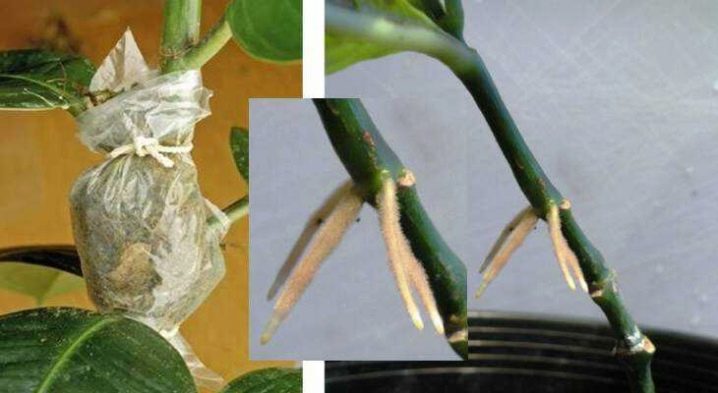
Experts use another method of reproduction - by seeds. This method is rarely used at home and is used only by professional botanists. If there is a desire to grow a plant from seed on your own, professional gardeners recommend purchasing a seed product in a specialized store.
The purchased seeds have the following advantages:
- high germination rate;
- long storage period;
- affordable price range;
- wide range of;
- no need for seed processing.
A small amount of bone meal must be added to the prepared soil.

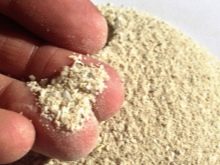
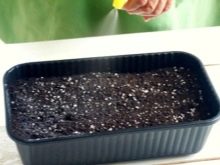
Seeds should be placed on the soil surface and sprinkled with a thin layer of earth. The container with seeds must be thoroughly moistened with a spray bottle and covered with transparent plastic wrap. To prevent rotting of seed material, the greenhouse must be ventilated daily and made sure that the soil does not dry out. After the appearance of all the sprouts, you can safely remove the film. The most comfortable temperature is +20 degrees... After the appearance of two leaves, you can start picking the plant.
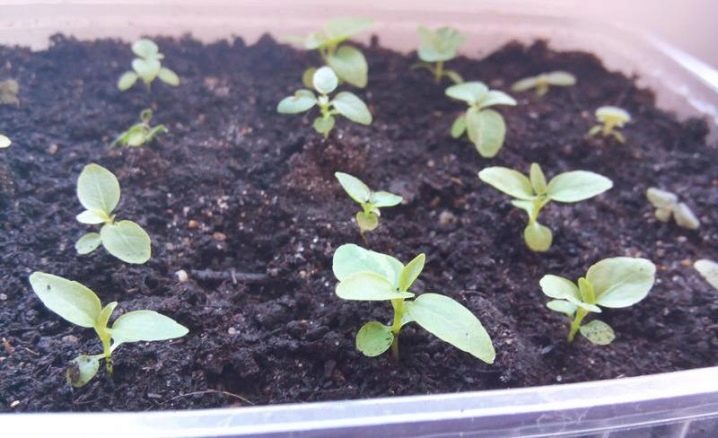
Pruning
Ficus is a fast-growing indoor plant species that grows quickly in comfortable conditions.
Annual pruning is done to achieve the following goals:
- decrease in plant height;
- stimulation of the formation of new branches;
- the formation of a lush crown of the required shape.
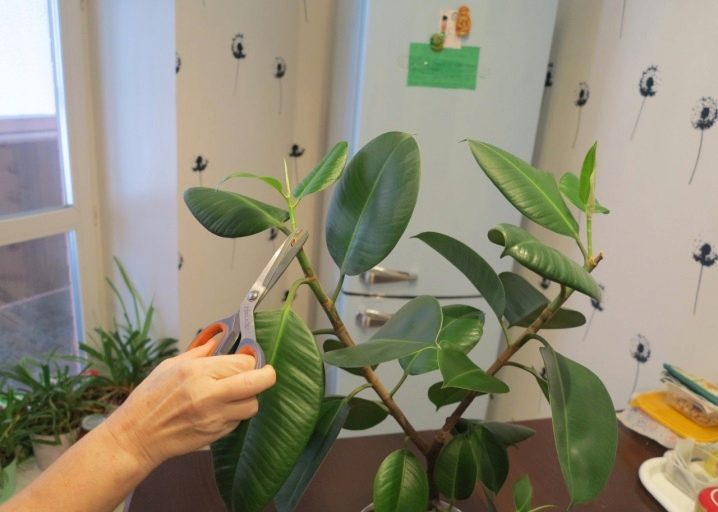
Before starting pruning, novice growers need to take into account that a change in the appearance of a plant occurs due to the formation of new shoots that emerge from the buds.
There are such types of kidneys as:
- apical;
- lateral.
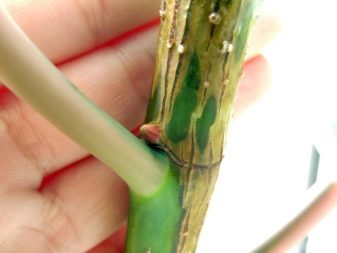
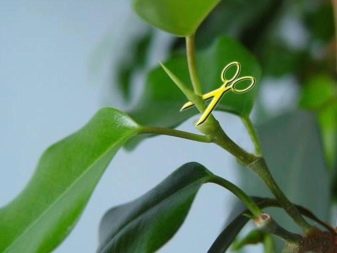
Sometimes it is enough just to remove the apical bud and the process of active growth of lateral shoots will start. To remove the processes, you need to use only sterile instruments that have a sharp cutting part. Leaking sap should be quickly removed with a dry cloth. It is necessary to form a plant and renew its shoots in the first months of spring. To remove thin shoots, it is necessary to cut at a right angle, and for thick ones - at an oblique angle. Botanists do not recommend removing aerial roots... These shoots should be directed towards the nutrient soil and, if possible, sprinkle them with earth.
After pruning and the start of active growth of the branches, experts recommend trying to create a bonsai-style composition. Wire frames and tensioning systems must be used to shape the plant into the desired shape.
Experts recommend not pruning old plants. This procedure injures the flower and can lead to its death.Indoor plants are irreplaceable helpers in creating a cozy and comfortable atmosphere. Before purchasing a ficus, you should carefully study its features and care rules.

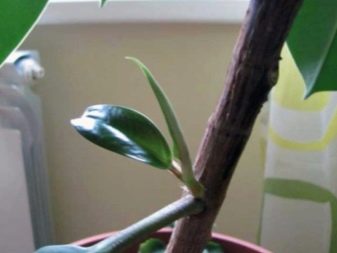
The next video describes in detail the care of the rubber plant.































The comment was sent successfully.